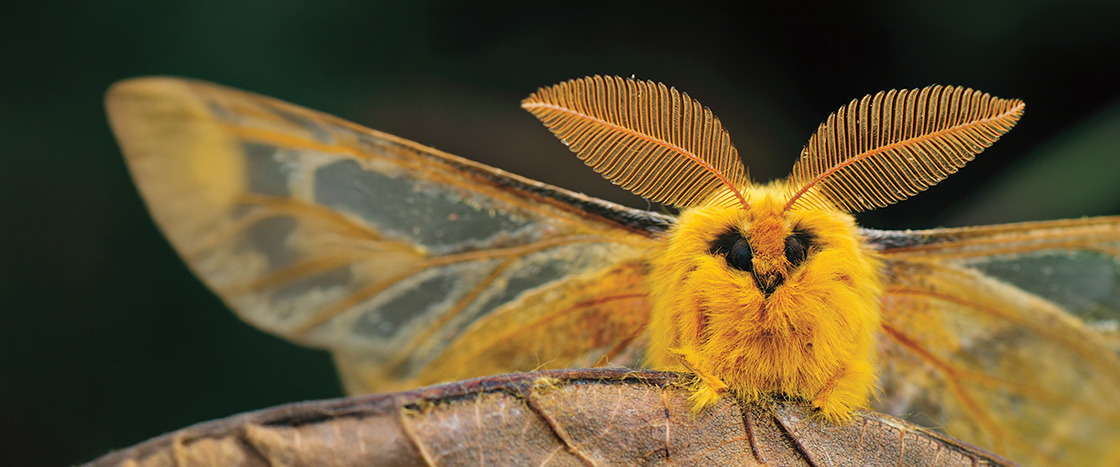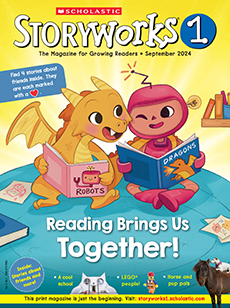Insects can be creepy and crawly. But moths are insects, and some people think they are cute!

Can a Bug Be Cute?
Learning Objective: Students will get information about moths through text and images.
This photo shows a moth very close up. Taking photos like this is called macro photography. You can see that the moth has big eyes. It is a bright color. And it is just so fuzzy!
- It has fluffy antennas.
- It has big eyes.
- It has a fuzzy body.
- It is bright orange.
Why are some moths fuzzy? They are a lot like butterflies. But most of them are nocturnal. They are out at night, when it is cooler. All that fuzz keeps them warm.
More Fuzzy Moths
Do they make you go “Aww”?
rosy maple moth
luna moth
cecropia moth
About the Article
English Language Arts Focus
Nonfiction Text Features: Photographs & Labels
Science Focus
Characteristics of moths
Implementation
- Whole group
- Small group
Pairings and Text Connections
- From the Storyworks 1 archive: “Picture This!: Do You Think I’m Creepy?” (October/November 2023); “What Do You Think?: Frowny Frogs, Cute or Gross?” (February 2023)
- Suggested books: Moth and Butterfly: Ta Da! by Dev Petty
Before-Reading Resources
- Vocabulary Slideshow (5 minutes) insects, macro photography, nocturnal, antennas
- Video: Insects, Insects Everywhere (5 minutes) Build background knowledge on insects.
Suggested Reading Focus
Getting information from text and images/labels (20 minutes)
- Begin by reminding children that we get information from pictures. Take a close look at the photo of the moth. Ask children to share what they notice about it.
- Read the mini article and bottom bar aloud for information about moths. What kind of animal is a moth? (an insect) Why are some moths fuzzy? (because they are nocturnal, and their fuzz keeps them warm at night.)
- Put your finger on a label, and have children do the same. Ask children what labels do. (They point to a part of the picture and tell us more about it.) Have children follow the arrows with their fingers. Then read the labels together.
- Finally, discuss what children learned from both the picture and the words in the article. What can they recall? What was most interesting? You can also have children vote on whether they think moths are cute.
After-Reading Skills Practice
Skills: Writing sentences; vocabulary/insects (15 minutes)
